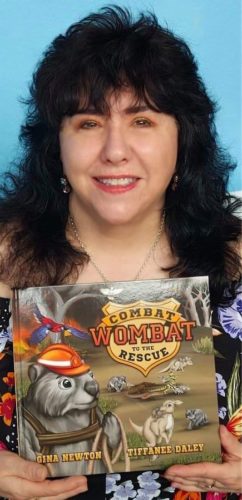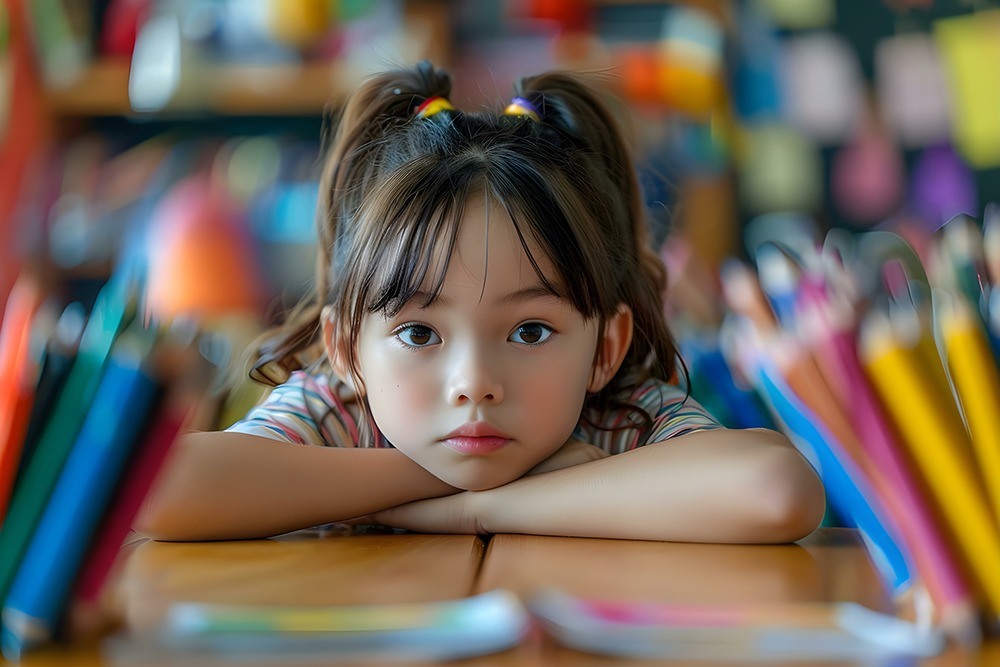A WOMBAT saving other animals from a bushfire?
Sounds familiar, but marine biologist, ecologist and children’s author Gina Newton’s latest picture book “Combat Wombat to the Rescue” wasn’t directly inspired by the accidental-hero wombats that made headlines earlier this year for sharing their burrows during the bushfires.

Though it’s undeniably serendipitous that the book’s being published now.
Gina, whose background is in marine biology, ecology, zoology and science communication, says she wants to get kids interested in conservation, wildlife and the environment.
“I feel it must have been shocking for young children to see the images on the news of bushfires, people losing their homes and animals in danger,” says Gina.
“I’m hoping this book can help them talk about difficult topics like this in a more gentle, nature-based way.”
Written six years ago, the story centres on Combat Wombat, who first appeared as a supporting character in Gina’s 2013 book “Blossom Possum and the Christmas Quacker”, as he summons all his brains and brawn during a bushfire to lead his buddies over a river to safety.
“Wombats really are the most intelligent creatures,” she says.
“They’re also excellent diggers and very strong in their bum, where they have a cartilaginous plate that they use to strengthen the walls of their burrows. They can also crush the skull of invaders, by squeezing them against the wall.”
Which makes it all the more fascinating that they allow animals to share their burrows in times of danger, Gina says.
“Animals did shelter in wombat burrows during the fires,” she says.
“It’s much cooler down there, one to three metres below the surface, and with a network of up to 10 burrows, of which wombats only ever use two to three at a time, there’s a lot of empty space.
“There would have been koalas, snakes, rabbits, wallabies even, birds sometimes, sheltering there. I wouldn’t say a wombat led them in, but when a fire is raging, it won’t chase them out. It’s almost like they understand that ‘we’re in this together’. They’re quite territorial though, so if there wasn’t any danger they’d be less generous.”
Initially commissioned by Scholastic Press, it’s now Melbourne-based publishers Ford Street that have brought “Combat Wombat to the Rescue” to life with “stunning” illustrations by Canberra-based artist Tiffanee Daley, and it’s all happened “at the right time”, says Gina.
“As a scientist I know how catastrophic the fires have been,” she says.
“Our wildlife was already in trouble, but since the fires it’s been unbelievable. It’s climate change in action.
“The changes we’re seeing are phenomenal, from insects all the way up to humans. It’s affecting all of us.
“The habitat loss is the critical thing. We’ve lost so many millions of hectares and many species of wildlife are now at risk, some that weren’t before, and many are now being pushed close to extinction. It’s terrifying.”
Having previously published the books “Amazing Animals of Australia’s National Parks” and “Hold On: Saving the Spotted Handfish”, Gina, who’s worked in science policy in the public service for more than 25 years, plus two years at the Australian Academy of Science, and is a past national president of the Australian Marine Sciences Association, says she wants to continue writing entertaining children’s books about Australia’s biodiversity.
She’s also created notes for schools to accompany “Combat Wombat to the Rescue”, that cover how different animals deal with fire, the importance of wildlife carers and rescuers, the ecology of bushfire and how fire used to be managed by First Nations people.
“I realise now that my science, creativity and conservation have all come together, and writing children’s books is the perfect avenue for me to express that,” she says.
“Even though I went on to be a scientist, by the age of six I was writing and illustrating stories, and when I was about 10 I got really engaged in saving the kangaroos.
“As well as my own creative need, I’m writing to engage kids so they’ll grow up to understand the world they live in and hopefully look after it better.
“It’s not happening now, that’s for sure.”
Who can be trusted?
In a world of spin and confusion, there’s never been a more important time to support independent journalism in Canberra.
If you trust our work online and want to enforce the power of independent voices, I invite you to make a small contribution.
Every dollar of support is invested back into our journalism to help keep citynews.com.au strong and free.
Thank you,
Ian Meikle, editor




Leave a Reply